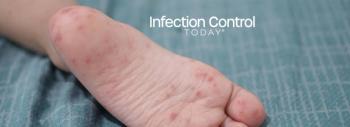
Infection Preventionists Under Strain: More Work, Fewer Resources
This installment of the interview with study authors, survey data reveal rising hours and responsibilities for infection preventionists, with staffing shortages fueling burnout risks and threatening the safety of both patients and health care workers.
A recent study found that
In their discussion with Infection Control Today® (ICT®), study authors shared how this increase affects the mental and physical health of IPs. The authors include Brenna Doran PhD, MA, hospital epidemiology and infection prevention for the University of California, San Francisco, and a coach and consultant of infection prevention; Jessica Swain, MBA, MLT, director of infection prevention and control for Dartmouth Health in Lebanon, New Hampshire; and Shanina Knighton, PhD, RN, CIC, associate professor at Case Western Reserve University School of Nursing and senior nurse scientist at MetroHealth System in Cleveland, Ohio.
“We know that, like just beyond traditional infection control duties, we're now involved with emergency preparedness, antimicrobial stewardship, data analysis,” Knighton explained. “There have been enhanced regulations and reporting obligations, which have demanded us to be more meticulous, as well as it's taken up more time. And I think that, overall, in the broader nursing and health care [sector], staffing shortages have led to increased responsibilities for existing staff. Staffing levels should be more aligned with workload demands. However, because things are constantly changing, it is currently still leading to a bigger strain.”
Swain added: “As an IP, we took on more responsibilities, like some of those things, like being part of emergency management, and now there's no way for us to sort of step away from those things, and there are new regulatory requirements around special pathogens and educating the staff. We’re now more involved in a lot of other areas that we just haven't been involved in. So there's no ability to step back and work fewer hours because there's just too much to do. The staffing hasn't really changed, and in some spaces, it's actually decreased, leaving fewer people to handle that larger bucket of work.”
The pandemic has brought about lasting changes. “There are responsibilities that we have now, kind of post-COVID, that we didn't have before,” Doran said. “During
The consequences of short staffing are serious. “For one, I would say delayed detection," Knighton said. "When we're talking about fewer IPs, it will automatically equate to slower identification and response to outbreaks, as well as higher rates of hospital-acquired infections. We're compromising patient safety just within that. We're also talking about overworked IPs, which leads to a higher risk of burnout, and it's going to impact the quality of infection prevention and control practices.”
Swain said succinctly: “We can do the bare minimum with the bare minimum staff, but it all really depends on what your hospital leadership wants their infection prevention program to accomplish. If we want to be at our best, then we must have the staff to be at our best.”
Even as hospitals emerge from the pandemic, infection prevention programs continue to feel the strain. “[Health care associated infection] rates, I think understandably, were higher during [COVID-19],” Doran said. “As we exited [the COVID-19 pandemic], there was an immediate pivot to addressing these high HAI rates. When you're working with limited staff, or you're constantly rehiring staff, or you have travelers, it's hard to get everybody on the same page and working towards a shared mission.”
The risks extend beyond patients, as the moderator said, “The one thing you also need to consider is health care workers’ safety as well, not just the patients, because it's anyone who's going to be in that space. And sometimes I think IPs forget to worry about themselves too.
Conclusion
As the study underscores, infection preventionists are doing more than ever before with fewer resources. “There is this universal discordance about what our institutions expect of us in our just physical capacity to do those number of hours, do that work,” Doran said. The voices of IPs themselves reveal the urgent need for staffing models that match the expanding scope of infection prevention.
This is the second installment of the interview. The first can be found
Reference
Doran B, Swain J, Knighton S. Quantifying the progressing landscape of infection preventionists: A survey-based analysis of workload and resource needs. Am J Infect Control. 2025;53(6):669-677. doi:10.1016/j.ajic.2025.03.012
Newsletter
Stay prepared and protected with Infection Control Today's newsletter, delivering essential updates, best practices, and expert insights for infection preventionists.






